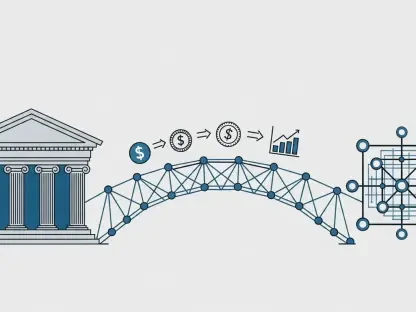India’s e-commerce sector has been revolutionized by the widespread embrace of digital payments. This seismic shift was sparked by key events like the demonetization of 2016, when the government invalidated certain currency notes to curb corruption and promote digital transactions. This policy change, along with government incentives, paved the way for a cashless ecosystem, encouraging consumers to adopt e-wallets and online banking. The COVID-19 pandemic further accelerated this trend, as physical distancing and health precautions made cash transactions less desirable. Consequently, the populace turned to digital payment platforms in vast numbers, ushering in a new era for India’s digital economy. These digital solutions have now become deeply integrated into the daily lives of Indian consumers, reshaping the way they shop and conduct business. As these platforms continue to innovate, they promise to further transform the Indian market, making transactions more streamlined and secure.
The Rise of Digital Payment Platforms
Digital payment systems have brought in a revolution that has not only simplified transactions but also leveraged up security and efficiency. Giants like Amazon Pay and Google Pay are spearheading this shift, offering seamless checkout processes. This ease of use is persuading more consumers to switch from traditional cash payments to these convenient digital methods. A report by GlobalData underscores this trend, revealing that alternative payment methods such as digital wallets now account for over half of e-commerce transactions in India in 2023, dwarfing the once ubiquitous cash on delivery model.The invasion of digital payments into the Indian e-commerce sector isn’t just about consumer convenience; it’s also creating a trusting environment where transactions are transparent and traceable. This paradigm shift is assiduously supported by the government and the Reserve Bank of India through various initiatives and policies that encourage digital transactions. Financial inclusion is another area that has seen a boost thanks to these digital platforms, as even those in the remotest parts of the country now have access to online marketplaces and payment solutions.
The Future of E-commerce and Digital Transactions
India’s e-commerce sector is set to thrive, with projections indicating a leap to 450 million online consumers by 2027. Fueling this growth is an uptick in digital adoption by SMEs, encouraged by initiatives like Flipkart Samarth. This surge is bolstered by the convenience and security of digital transactions, along with increased smartphone and internet use.The future of Indian e-commerce is decidedly digital, marked by a noticeable shift away from cash payments. By 2028, the industry may see its value double, propelled by the flexibility of digital payment methods. Constant enhancements in digital payment systems are steering India towards a less cash-reliant economy.This digital shift transcends transactional changes and is molding new consumer behaviors, influencing financial strategies, and guiding future economic policies. As India progresses, its e-commerce landscape is not just growing; it’s undergoing a transformative journey that mirrors the nation’s march towards a digital-first economy.









